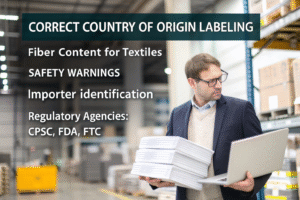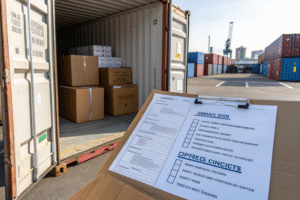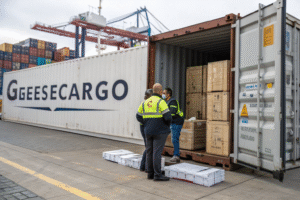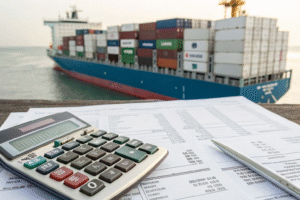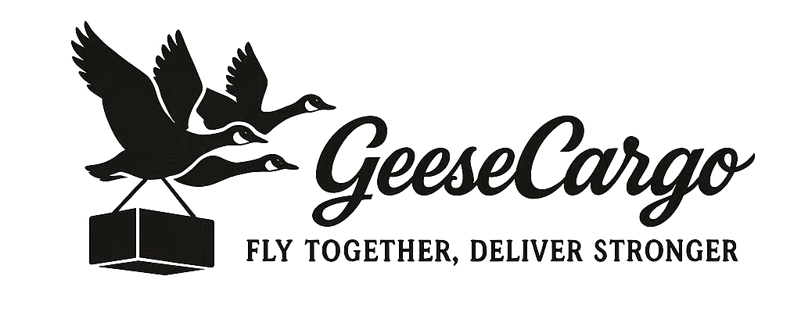When a client's $380,000 shipment of electronics fell from a crane during loading last year, their cargo insurance didn't just cover the loss—it preserved their business relationships and prevented bankruptcy. As founder of GeeseCargo, I've witnessed how proper insurance transforms catastrophic events into manageable incidents. Cargo insurance isn't an expense; it's financial protection that separates thriving importers from those one accident away from collapse.
Cargo insurance protects against physical loss or damage during transit, covering risks like vessel sinking, container collapse, theft, weather damage, and handling accidents. Standard carrier liability typically covers only $500 per package, while comprehensive insurance provides actual value protection up to the full invoice value plus freight and insurance costs.
Understanding cargo insurance requires recognizing that carrier liability provides minimal protection while marine insurance offers comprehensive coverage. The financial protection extends beyond simple reimbursement to include business continuity, customer relationship preservation, and supply chain stability.
What Types of Coverage Are Available and What Do They Protect?
Different insurance policies address varying risk levels and financial exposures. Choosing the right coverage level depends on your cargo value, risk tolerance, and supply chain vulnerability.
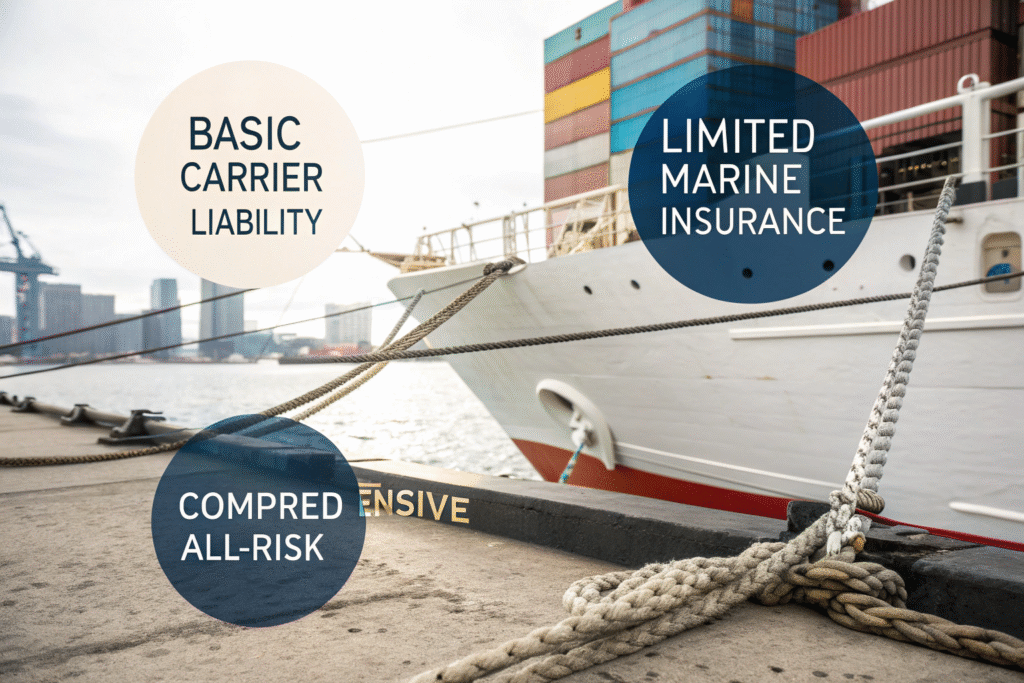
How Does Carrier Liability Differ from Marine Insurance?
Carrier liability under international conventions like the Hague-Visby Rules limits carrier responsibility to approximately $500 per package or $1.52 per kilogram. This minimal coverage applies only when the carrier is legally liable for negligence, excluding numerous common risks.
Marine insurance covers "all risks" of physical loss or damage with specific exceptions. The coverage typically includes accidents, natural disasters, theft, and handling damage regardless of fault, providing substantially broader protection than carrier liability.
Policy types range from open cargo policies covering all shipments to voyage-specific policies for individual shipments. Open policies offer continuous coverage with automatic protection for all shipments, while voyage policies provide flexibility for unusual or high-value shipments.
What Specific Risks Does Comprehensive Insurance Cover?
Physical loss events include total losses like vessel sinking, container falling overboard, or complete theft. These catastrophic events typically involve total shipment loss requiring full value reimbursement.
Partial damage scenarios cover repairable damage from water intrusion, crushing, or handling accidents. The insurance covers repair costs, diminished value, or in severe cases, the total value if repairs aren't economical.
Consequential losses may include general average contributions, salvage charges, or wreck removal costs. These additional exposures can substantially exceed the cargo's value in certain maritime emergencies.
How Does the Claims Process Work When Loss Occurs?
Understanding the claims process before incidents occur ensures prompt recovery and prevents procedural mistakes that could jeopardize compensation.
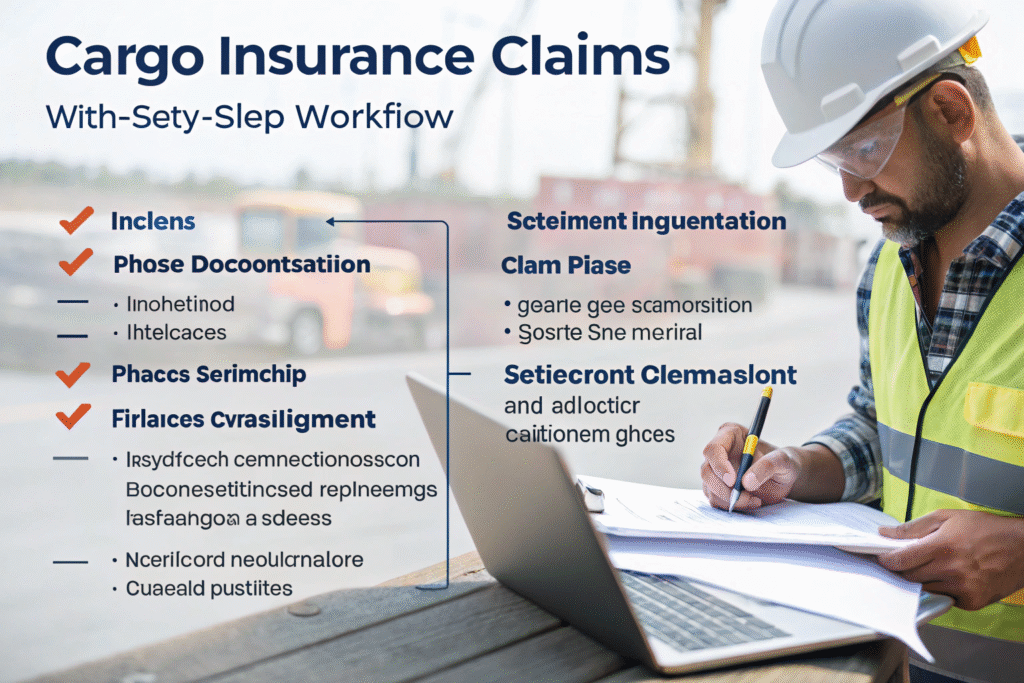
What Immediate Actions Preserve Your Claim Rights?
Notification to insurers must occur immediately upon discovering loss or damage—typically within 24-48 hours. Prompt notification allows insurers to appoint surveyors and preserve evidence that might determine claim validity.
Damage documentation through photographs and written descriptions creates essential evidence. Photograph external container condition, packaging damage, and product damage from multiple angles before moving goods.
Preservation of damaged goods prevents further loss and maintains evidence. Isolate damaged items and protect them from additional damage while awaiting insurer inspection, unless emergency disposal is necessary for safety reasons.
How Does the Investigation and Settlement Process Work?
Surveyor appointment by the insurer provides independent assessment of cause and extent of damage. The surveyor examines goods, reviews documentation, and determines whether the loss falls within policy coverage.
Documentation submission includes the insurance certificate, commercial invoice, bill of lading, packing list, and damage evidence. Complete documentation enables efficient claim processing and prevents requests for additional information.
Settlement negotiation determines the final payment amount based on policy terms and actual loss. The process may involve repair estimates, diminished value assessments, or total loss calculations depending on damage severity.
What Common Coverage Gaps Leave Importers Exposed?
Standard insurance policies contain exclusions and limitations that create unexpected coverage gaps. Identifying these vulnerabilities enables strategic protection through endorsements or supplemental coverage.
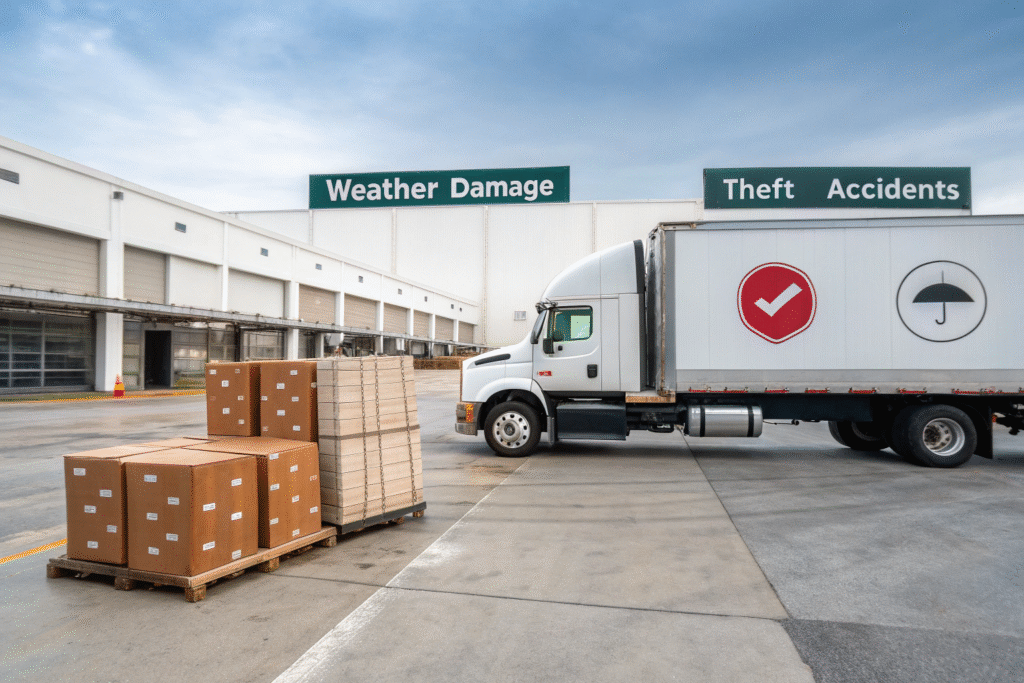
Which Policy Exclusions Create Significant Exposure?
Inadequate packaging exclusions deny claims when damage results from improper packing rather than transit perils. Insurers expect packaging to withstand normal transportation handling, with specialized packaging required for fragile or high-value items.
Delay and consequential loss exclusions leave businesses vulnerable to financial impacts beyond physical damage. Loss of market, missed production deadlines, or contractual penalties typically require separate business interruption coverage.
Inherent vice exclusions apply to damage from natural product characteristics like spontaneous combustion, fermentation, or normal shrinkage. Perishable goods and certain chemicals face particular exposure from this exclusion.
How Do Sublimits and Deductibles Impact Recovery?
Sublimits for specific perils may restrict recovery for certain loss types like theft, pilferage, or non-delivery. Standard policies might limit theft coverage to a percentage of total insured value unless higher sublimits are purchased.
Deductibles represent the portion of each claim paid by the insured before coverage applies. Higher deductibles reduce premiums but increase out-of-pocket costs during claims, requiring careful financial analysis.
Geographical limitations may exclude coverage in certain high-risk regions or during specific political situations. War risk coverage typically requires separate endorsement and additional premium.
How Can You Optimize Insurance Costs While Maintaining Protection?
Insurance represents a significant logistics cost, but strategic approaches can reduce premiums without compromising essential protection.
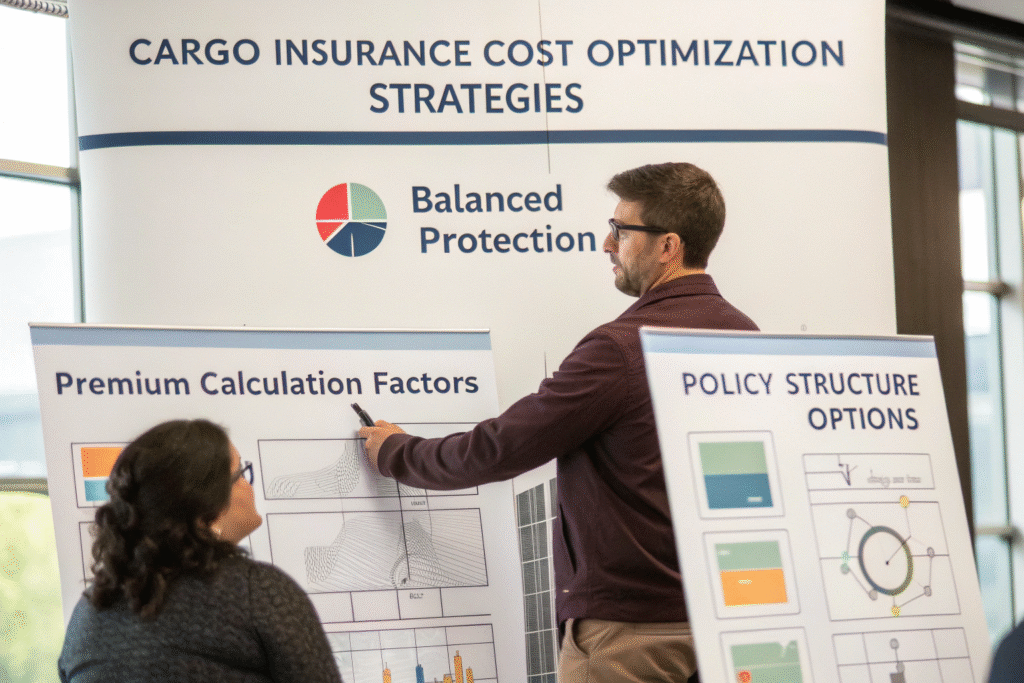
What Risk Management Practices Reduce Premiums?
Loss prevention measures like improved packaging, security devices, and carrier vetting demonstrate risk reduction to insurers. Documented safety programs often qualify for premium credits through reduced loss expectations.
Claims history directly impacts insurance pricing through experience rating. Maintaining a claim-free history through careful supply chain management significantly reduces premiums over time.
Consolidated insurance programs covering multiple shipment types or trade lanes often qualify for volume discounts. Insuring all shipments with one insurer typically costs less than fragmented coverage across multiple providers.
How Does Policy Structure Impact Overall Costs?
Deductible selection balances premium savings against risk retention. Higher deductibles substantially reduce premiums but require financial capacity to absorb larger losses before coverage applies.
Coverage limits should reflect actual exposure rather than arbitrary round numbers. Insuring to exact values rather than inflated amounts reduces premiums while maintaining adequate protection.
Payment terms offering annual premiums instead of per-shipment charges often include discount structures. Larger upfront payments typically secure better rates than pay-as-you-go approaches.
What Specialized Coverage Options Address Unique Risks?
Standard cargo policies leave gaps for specialized commodities or unusual supply chains. Understanding available endorsements enables customized protection.
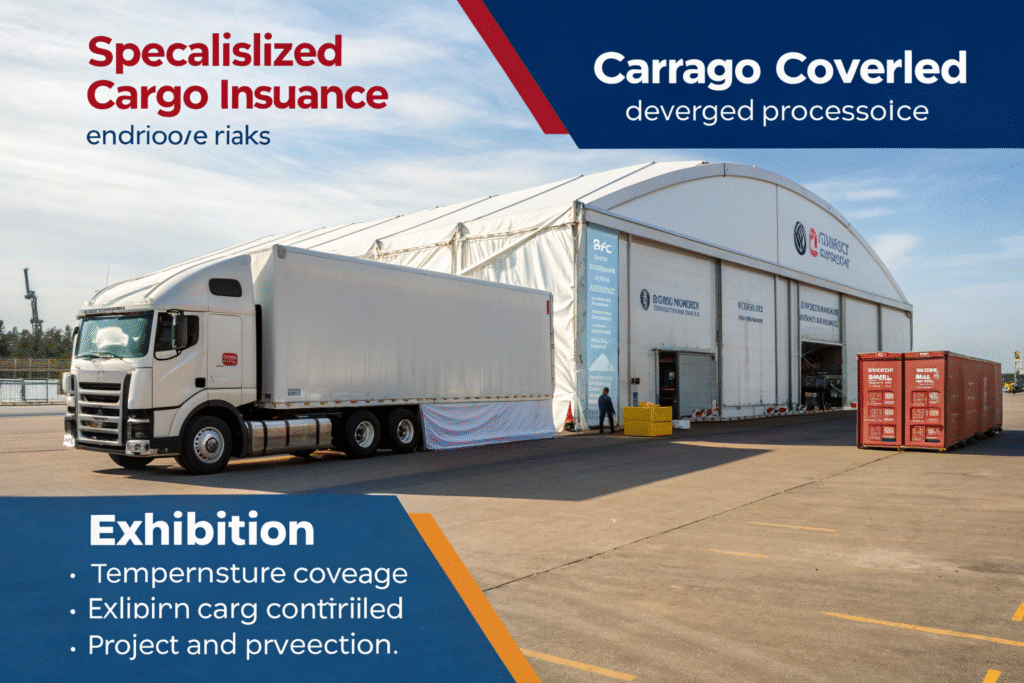
When Is Temperature-Controlled Coverage Necessary?
Reefer breakdown protection covers spoilage from refrigeration failure during transit. This coverage is essential for perishable foods, pharmaceuticals, and certain chemicals requiring temperature maintenance.
Temperature excursion coverage protects against losses when temperatures deviate from specified ranges. Even brief deviations can destroy certain products, making this coverage crucial for sensitive shipments.
Defrost insurance covers losses from planned defrosting during extended voyages. Some refrigerated commodities require periodic defrosting that standard policies might exclude without specific endorsement.
What Specialized Coverages Protect Unique Business Models?
Stock throughput insurance covers goods from point of manufacture through to final sale, including warehouse storage. This continuous coverage eliminates gaps between marine and property insurance.
E-commerce fulfillment insurance protects inventory at third-party logistics providers and during last-mile delivery. Traditional policies often exclude these operational models without specific endorsement.
Exhibition and event coverage protects goods during trade shows, exhibitions, or temporary installations. These environments present unique risks not covered by standard transit policies.
Conclusion
Cargo insurance represents a strategic financial protection tool rather than merely a compliance requirement. The most successful importers treat insurance as an integral risk management component, regularly reviewing coverage, assessing emerging risks, and optimizing protection strategies.
At GeeseCargo, we've helped clients recover over $28 million in cargo losses while preventing countless additional claims through proactive risk management. The businesses that emerge strongest from supply chain disruptions are those with comprehensive insurance programs, established claims processes, and strong insurer relationships.
Begin your insurance optimization by conducting a thorough coverage review comparing your current protection against actual exposures. Then work with experienced marine insurance professionals to identify coverage gaps, cost-saving opportunities, and strategic enhancements. Remember that in cargo insurance, the cheapest policy often becomes the most expensive when claims occur, while comprehensive protection provides peace of mind that enables business growth.

